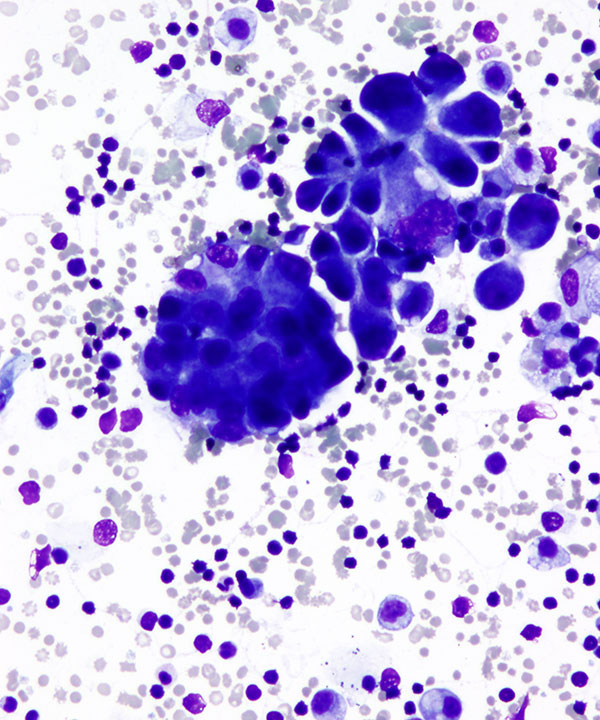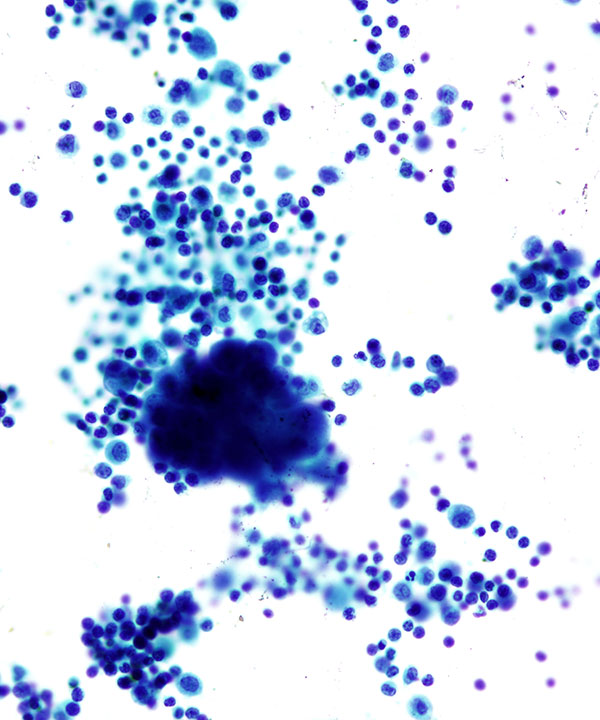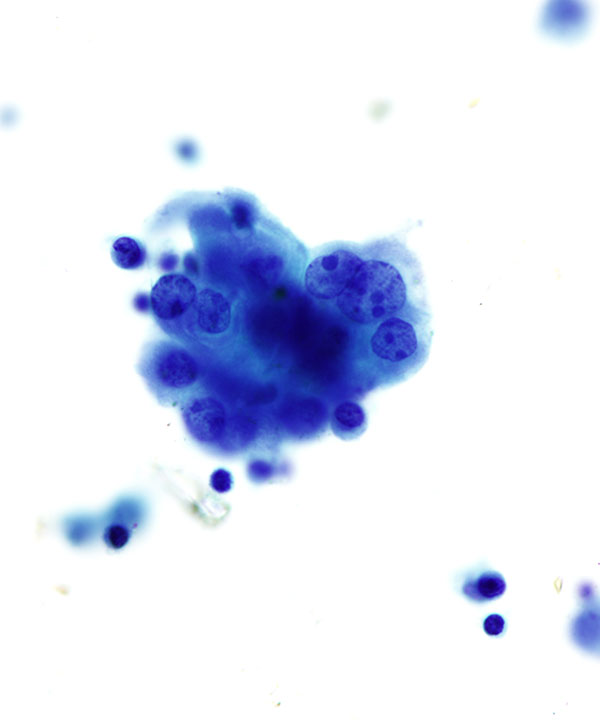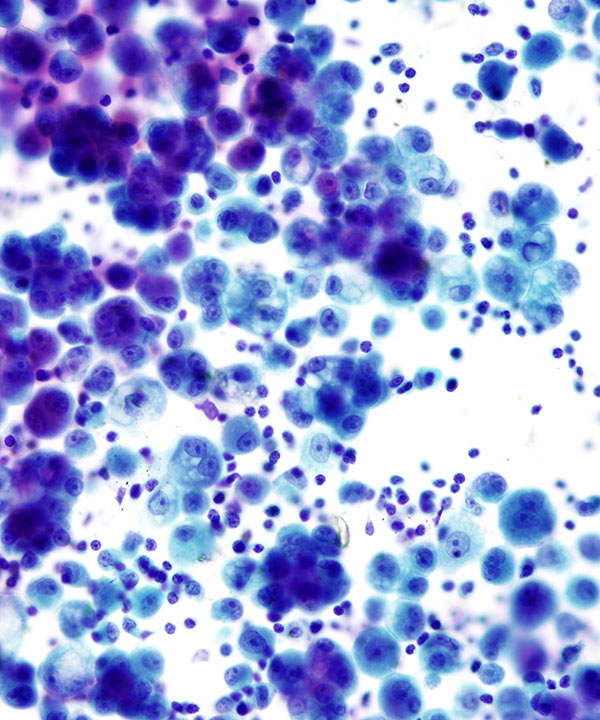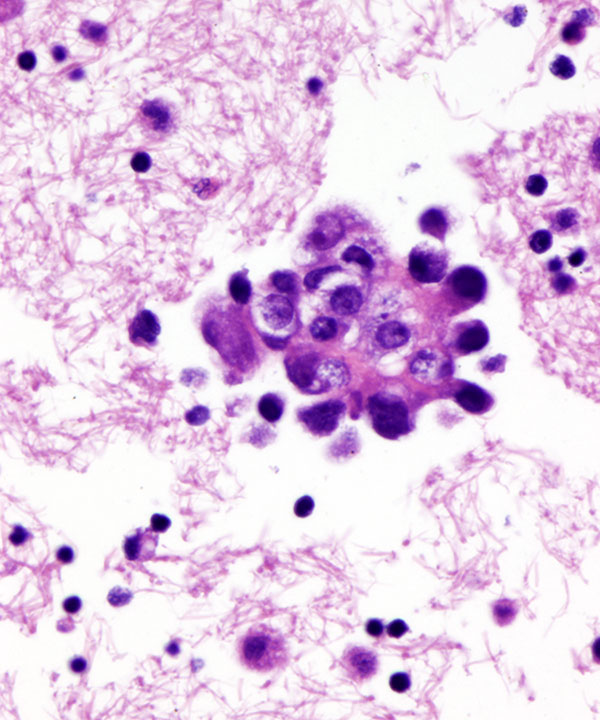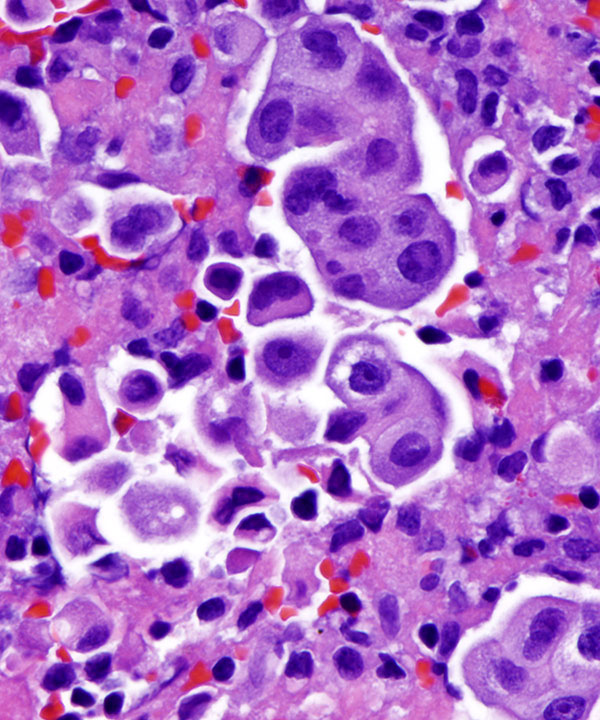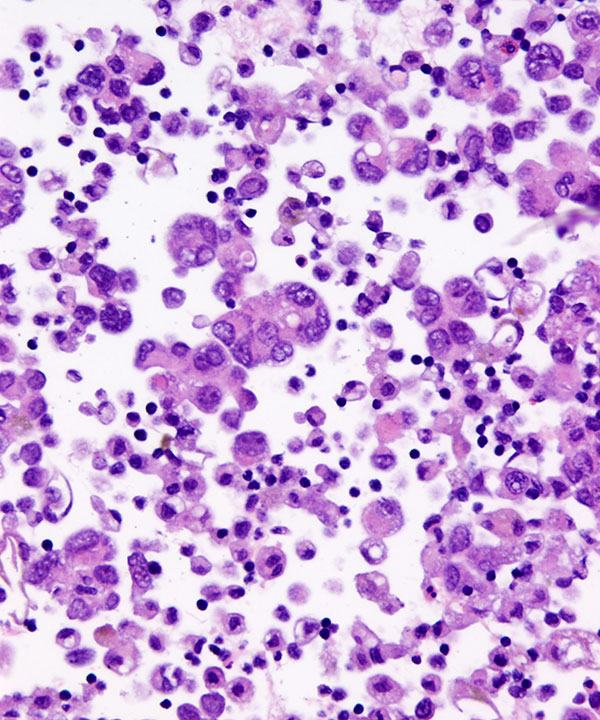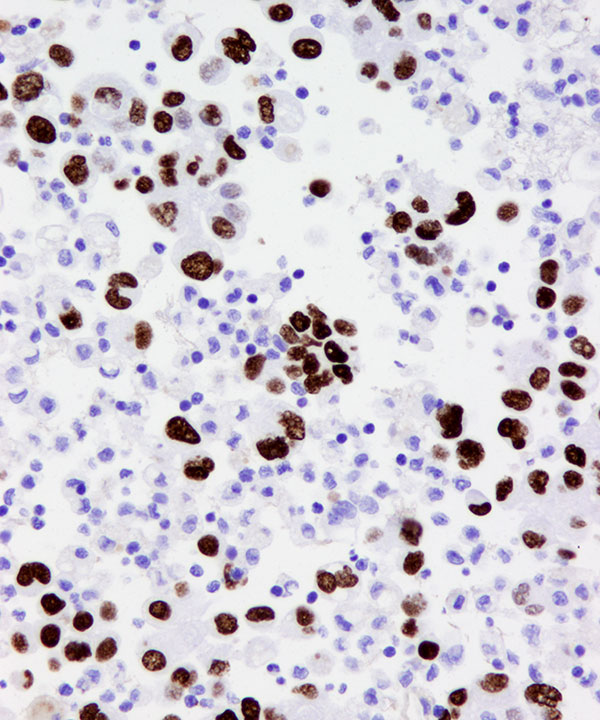Features
• Most common cause of malignant effusions with adenocarcinomas being the most frequent.
• Foreign population of cells that stand out from mesothelial cells and histiocytes
• Exception:
- cells that mimic native cells
- all tumor cells so they all look alike
• Carcinomas typically form cohesive clusters and ball up to form spheres with smooth community borders ; however some tumors shed as single cells (lobular breast carcinoma, gastric signet ring cells). May or may not have malignant features (enlarged irregular nuclei with pleomorphism) but usually have high N:C ratios and coarse chromatin.
• Usually large cells with high N:C ratios
• Often form cell groups, cell balls, papillae
• May have single cells
• Cells usually round up in effusions
• Smooth community borders in adenocarcinoma
• Adenocarcinoma can have cytoplasmic mucin vacuoles
• Nuclei enlarged, irregular, hyperchromatic
• Coarse chromatin
• Prominent nucleoli
• IHC: Tumor cells typically express TTF-1, BerEP4, MOC31, while negative for calretinin (D/D mesothelial cells) and CD68 or CD163 (histiocytes). Napsin A is positive but may also be seen expressed in macrophages.

